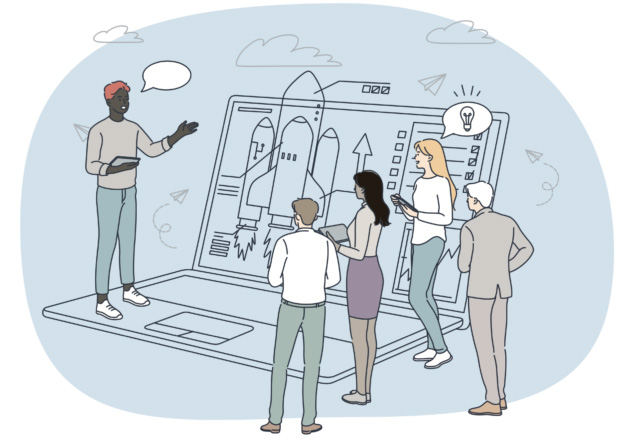Thanks to the pandemic, a corporate culture of innovation has belatedly arrived.
The boxer Mike Tyson once mused that “everyone has a plan until they are punched in the mouth.” The pandemic was a powerful right hook across the jaw of governments and businesses. Plans, strategies – processes followed to the letter for years – were useless against the new and unpredictable enemy.
Yet the coronavirus sucker punch was not without its benefits. Much of the international response to the pandemic necessitated the immediate destruction of the rulebook. Suddenly rule-breaking was in vogue. The new enthusiasm for innovation was justified by results.
Let us not consume vital column inches repeating the miracle explosion of remote working, other than to say corporates worldwide delivered fully-operable homeworking in a matter of weeks, after talking about it for years. Many will return to their offices knowing that a home-office hybrid model can and does improve productivity – and understanding how to manage it too.
Food deliveries, click and collect, instant shopping, all boomed and thrived. The online retail experience was honed and hosed and rapidly became faster and easier. Consumers quickly adapted to the new world, finding niche retailers with something unusual or interesting to offer. The opportunities born of the retail revolution are endless: my guess is that people will dress better, eat better and drink better, now myriad virtual shop windows are in their line of sight.
The pandemic offered an intense testbed for innovations that were embryonic, even dormant. In the US, General Motors’ autonomous car division, Cruise, brought its self-driving cars out of dormancy to deliver supplies around San Francisco for two local food banks. In helping food banks, they became an essential service, freeing up food bank volunteers to focus on vulnerable people and – simultaneously – allowing Cruise to test its technology in a way it has never been able to before.
Like remote working, innovation itself was much talked about, too little delivered. Perhaps we needed the pandemic’s punch in the mouth. Now that punch has landed, and the corporate world has fought back from the ropes, it should remind itself of the multitude of techniques that can make winning at innovation become a habit:
- Encourage leaders to be coaches, not bosses, for quicker project turnaround.
- Recognize that everyone is an innovator. Even small ideas add up.
- Identify the rulebreakers; they’ll help the organization think differently.
- Ensure your innovation project teams are multidisciplinary.
- Reward and incentivize innovation and quick turnarounds, especially from the bottom up.
- Give all employees free access to executive and senior teams.
- Remove distractions, barriers, and red tape within the organization.
- Provide support and restoration for those who are exhausted by all the duties of their regular jobs.
- Hold essential meetings only, allowing employees to get on with their jobs.
- Allow innovation project members to freely collaborate with external parties.
Most of these ten principles cut against the pre-pandemic reality in many global corporates. Too often, major organizations implicitly believed – as the great Marshall Goldsmith warned against – that what got them here will get them there. The age of hierarchy, conformity and procedure ought to have ended as the technological revolution made rapid, boundless innovation possible. Yet it lagged it by more than a decade. The pandemic made process and procedure instantly redundant for many corporations. Only those who could innovate would survive and thrive.
Coronavirus has shocked the business world into a new era. The punch in the mouth prompted a transformation. The innovation fight back has just begun. It will endure.




